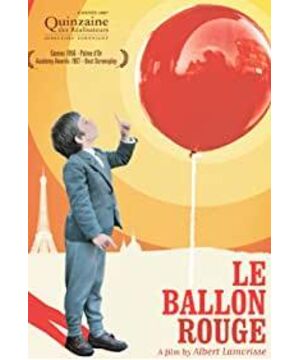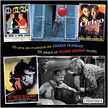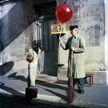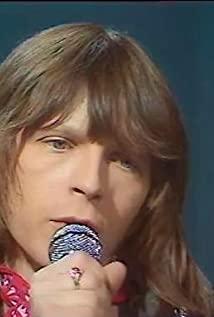"Red Balloon" is a fantasy short film by French director Albert Lamoris in 1956, which won the Palme d'Or in the main competition unit of the 9th Cannes Film Festival. In this film, Lamorris creatively endows the inorganic object⁻⁻ red balloon with a personified subject consciousness, so that the focus of the film is not limited to a normal character. This processing makes the image narrative and emotional expression parallel and symmetrical. the main subject without appearing to be singular. A notable feature of the film is the lack of dialogue lines, expressing the film in the form of a silent film, which requires the screen to not only convey basic visual information, but also to assume more narrative functions, extending only by the screen. The possibility of video narration is mainly manifested in the delicate processing of audio-visual language. The director accomplishes this narrative task through clever use of the score and extremely concise lens language. Familiar audio-visual effects express the soundtrack to create a certain mood, so that abstract emotions can be expressed in a specific scene. At the beginning of the film, the main body does not appear, but the music comes first. The gloomy and heavy music complements the gray street scene and sky on the screen, creating an icy situation. Then the little boy entered the painting, teasing the kitten. Under the long-range lens, the small individual and the huge building formed an opposing relationship in the frame. In just one opening, the director explained the little boy's inner loneliness through highly condensed audio-visual language, paving the way for the subsequent narrative. The next shot, the music continues, is still a restrained long-range shot. The little boy descends from the height of the scene, and then the camera moves up and down with the boy's climb, and the red balloon finally appears in the audience's field of vision. The bright red balloons are out of tune with the surrounding cool colors, like a local hue that stands out from the main tone structure, almost becoming a demonstration of gray Paris, giving the audience a strong visual cue and launching a narrative. At this time, the warm-colored red balloon is no longer a symbolic visual image, but is given more symbolic meaning. Its appearance brings warmth and happiness to the little boy. Finally, the little boy came out and the music stopped abruptly, representing the end of the first scene where the boy meets the balloon. In addition, the temporary soundtrack throughout the film not only ensures emotional coherence, but also fully mobilizes the audience's perception, so that the audience's attention can be focused on the picture. role of narrative. The director also emphasizes the use of deep shots to express spatial relationships. A scene in which a little boy waits for the bus with a balloon in his hand, and runs back to school in the street scene after being refused to get in the bus. The deep shot explains the multiple interrelationships between the boy and the balloon, the boy and the environment, and the balloon and the environment, making the interior of the picture The amount of information and the narrative form of the visual space surface structure are both increased and strengthened. In addition, the depth lens has the function of maintaining the integrity of the space. In a scene where the little boy avoids the chase of a group of bad boys, the depth lens completely shows the whole picture of the streets of Paris, and at the same time clearly points out the difference between the little boy and the bad boys. The spatial position presents the flowing and pulling conflict tension between the characters and the environment. Another great success of the film is the director's skillful use of long takes. As a common form of expression, long shots have become a special kind of montage sentence because they contain more content. It eliminates the skill of editing itself and plays an important role in the process of emotional progression. The prolific presence of long takes in the film exemplifies this interpretation. At the beginning of the film, a fixed long shot is used to build the basic image of the little boy, and quickly draws the psychological distance between the audience and the little boy, providing the audience with emotional power that can be perceived subconsciously, so that the audience's viewing emotions and the film's emotional power. The emotions are in the same tense. The advantage of doing this is that it can immerse the audience in the screen for a shorter period of time, and the opposite editing will break this immersion. At the beginning of its birth, the long shot has the essential function of gradually moving towards reality, and it can bring the "realism" that the audience recognizes subconsciously. The director used long shots in many places to show the interactive scene/life scene between the little boy and the red balloon, which invisibly enhanced the authenticity of the picture. Under the gaze of the long shot, the movements of the red balloon gave it a clear Subject consciousness makes the audience subconsciously affirm the personification of the red balloon. At the end of the film, the process of the red balloon being "killed" was also shown in a long shot. After the red balloon was hit by a slingshot, it swayed in the air, a little deflated. The long shot cruelly recorded the slowness of the red balloon's "life". The process of slow fading is in contrast to the previous fast editing rhythm, and the time is repeated and stagnant until the red balloon is smashed by a foot. This coherent process amplifies the role of emotion and strengthens the impact of emotion on the audience. Zero editing expresses this silent and powerful accusation. The two-dimensional meaning carried by the red balloon The red balloon in the film carries a fictitious, fairy tale-like representation of innocence and warmth. It appears when the little boy is alone and gives him a moment of company, but it seems that the friendship between them is a superficial one. In the market, the little boy and the red balloon are staying in front of the little girl and the mirror, respectively, which shows that although the two have formed a relatively good friendship, they still show a desire for the same kind of friends. Two equally lonely souls joined together out of helplessness, just as a kind of temporary friends, drawing a little warmth from each other. So are they really sincere? It seems that the little boy at the end has given the answer to the "dead" red balloon without even looking back. In addition to the symbolism on the surface, the red balloon also contains the spirit of rebelling against the stereotyped adult world. The film also reflects the antagonistic relationship between the red balloon and society through details. The most visual presentation is a group of heterogeneous elements, the "red" of the red balloon and the "gray" of the material environment. The strong color contrast reflects the contrast of the imagery relationship between the two. The gray city symbolizes a solidified, institutionalized, and deprived social system of free will, while the red balloon symbolizes a rebellious, free, and uneasy spiritual concept. In addition, there are plot hints. For example, the teacher locked the little boy in a small room because he brought a red balloon to disrupt the classroom order. The red balloon has been pestering the teacher, forcing him to open the door for the little boy as a last resort. However, the director has a negative attitude in this regard. The fictional red balloon seems to have a Shakespeare-style tragic fate. struggle. At the end, the director arranged a large group of colorful balloons to lead the boy to escape from the filthy and gloomy city. These balloons are undoubtedly the incarnation of the red balloons, taking over the will of the red balloons. The director sets such a poetic ending, which implies With the director's deep concern and disappointment in this world, he believes that there is no way out to stay in such a world, but to fly far away. In short, in this film, the director gave full play to the advantages of the lens language, internalized it as part of the narrative form, combined the specific visual picture with the abstract ideological meaning, and made the construction of the film plot into the film. The scope of allegorical interpretation greatly exceeds the actual narrative ability of the film. At the same time, the director attaches great importance to the expression of emotions, concretizing inner emotions, using red balloons as an important carrier of emotions, and interweaving the emotions and fate of characters, as well as the emotions and atmosphere of the film with the social environment, so that the environment is highly involved in the narrative. In his article "On-cameraity", Deluc asked film creators to find the subject matter of the film and the means of expression of the film, and to create the poetic state of the person or thing created by the characteristics of the film. The film is based on a simple story frame, and uses the visual structure to highlight the psychological state of the characters and convey specific emotions, that is, to show the so-called poetic state of the work. From this point of view, Lamorice's "Red Balloon" is probably very favored by the Impressionists.
View more about The Red Balloon reviews







